US Baghdad embassy attacked by protesters angry at air strikes

Protesters angered by recent US air strikes targeting an Iranian-backed Iraqi militia have attacked the American embassy compound in Baghdad.
US troops fired tear gas to disperse a crowd that breached the outer wall of the compound, which is in the capital's heavily fortified Green Zone.
A guard post on the street nearby was also set alight.
US President Donald Trump accused Iran of "orchestrating" the attack and said it would be "held fully responsible".
At least 25 fighters died when the US bombed bases associated with the Kataib Hezbollah militia in western Iraq and eastern Syria on Sunday.
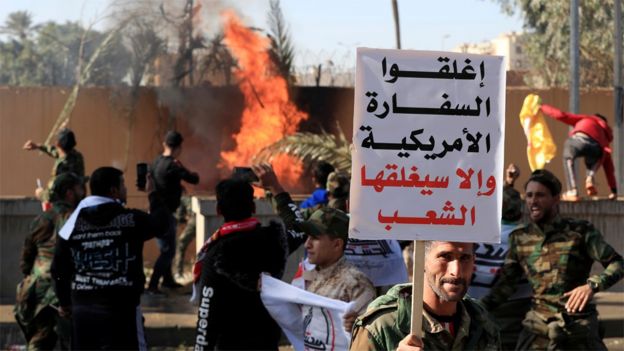 REUTERS
REUTERS
The US said it was retaliating for a rocket attack on an Iraqi military base in Kirkuk on Friday that killed an American civilian contractor.
Iraqi Prime Minister Adel Abdul Mahdi said the strikes had violated his country's sovereignty, while Kataib Hezbollah leader Abu Mahdi al-Muhandis, warned that its response "would be very tough on the American forces in Iraq".
What happened in Baghdad?
Tuesday's protest took place after funerals were held in Baghdad for the militia fighters who were killed in the US strikes.
Thousands of mourners - including Abu Mahdi al-Muhandis and several other senior militia and paramilitary leaders - marched towards the Green Zone, where many Iraqi government offices and foreign embassies are located.
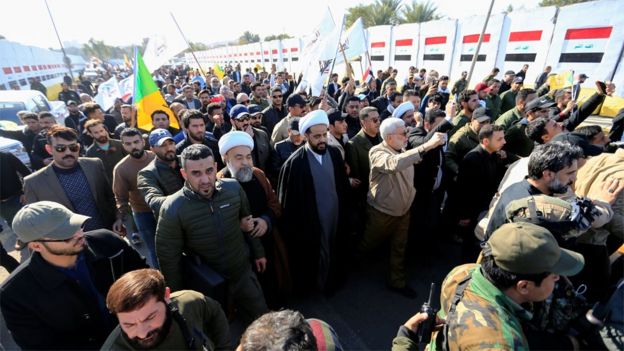 REUTERS
REUTERS
They were allowed by Iraqi security forces to enter the zone and gather on a street outside the US embassy compound.
"This embassy has been proved to be an embassy of plotting against Iraq, the embassy of spying on Iraq and the embassy of running schemes of sabotage in Iraq," said Qais al-Khazali, head of the Asaib Ahl al-Haq militia.
Waving Kataib Hezbollah and other militia flags, and chanting anti-American slogans, the protesters threw stones at the compound's main gate, pulled down security cameras, attacked empty guard posts, and started fires.
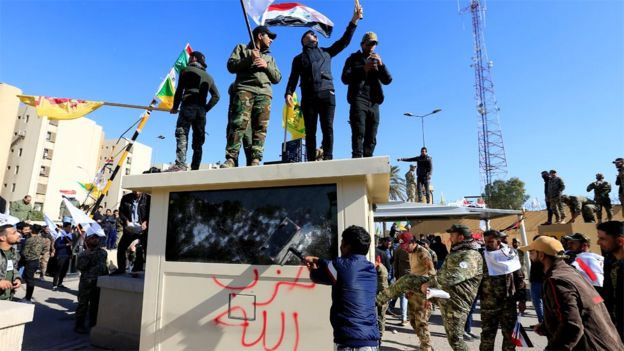 REUTERS
REUTERS
The situation later escalated when the compound's wall was breached.
The Associated Press reported that a gate was smashed open and that dozens of people pushed about 5m (16ft) into a corridor leading to the main embassy building, before being forced to retreat by tear gas fired by US troops. Reuters news agency said stun grenades were also fired.
Iraqi soldiers and riot police were reportedly later deployed in the area.
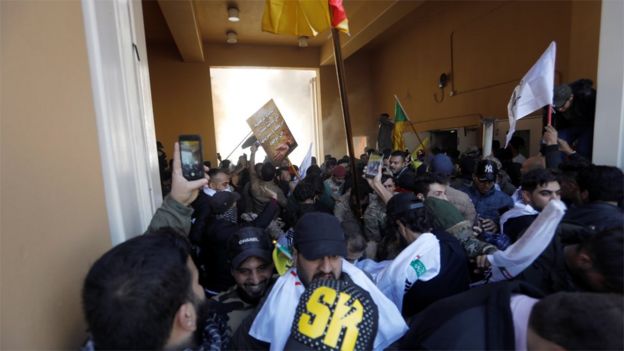 REUTERS
REUTERS
The Popular Mobilisation, a paramilitary force dominated by Iran-backed Shia militias, said 20 protesters were wounded by live rounds and tear-gas canisters.
It was not clear whether civilian staff were inside the embassy during the attack.
There were reports that the US ambassador, Matthew Tueller, had been evacuated. But a source close to the embassy told the BBC that Mr Tueller had left the country before Sunday's strikes for a planned Christmas holiday.
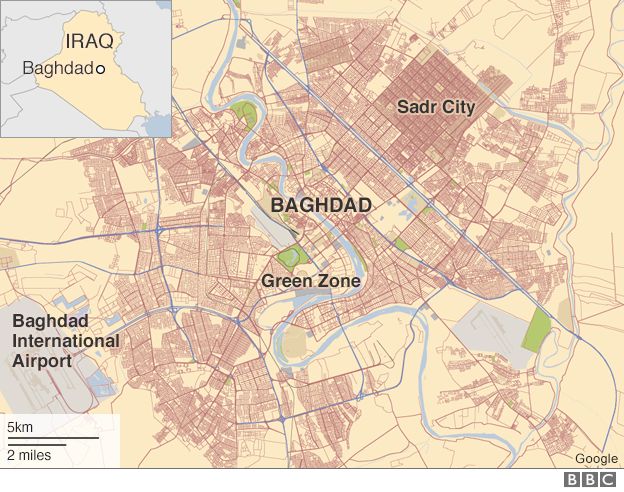

What was the reaction?
Several hours after the protest began, Prime Minister Abdul Mahdi called on people to leave the area around the US embassy.
"This is a reminder that any attack on or harassment of embassies and foreign delegations are acts that will be firmly prevented by security forces and severely punished by the law," he said.
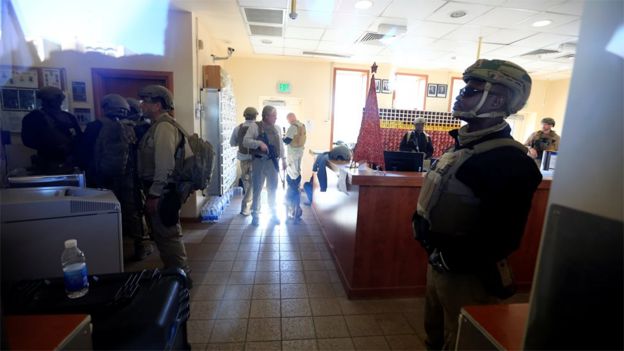 REUTERS
REUTERS
President Trump tweeted: "Iran killed an American contractor, wounding many. We strongly responded, and always will. Now Iran is orchestrating an attack on the U.S. Embassy in Iraq. They will be held fully responsible. In addition, we expect Iraq to use its forces to protect the Embassy, and so notified!"
There was no immediate response from the Iranian government.
Kataib Hezbollah meanwhile called for protest in front of the embassy until it was closed and the ambassador was expelled from Iraq, news website Al-Sumaria said.
Why did the US target Kataib Hezbollah?
The US said the militia had carried out repeated attacks on Iraqi bases that host US-led coalition forces fighting the Islamic State (IS) group.
In response, it added, US forces conducted "precision defensive strikes" on Sunday against five facilities, including weapon stores and command and control locations, that would degrade its ability to conduct future attacks.
Since 2009, the US has designated Kataib Hezbollah as a terrorist organisation and listed Abu Mahdi al-Muhandis as a "global terrorist", accusing them of threatening the peace and stability of Iraq.
The defence department said the militia had a "strong linkage" with Iran's Quds Force, the overseas operations arm of the Islamic Revolution Guard Corps (IRGC), and had "repeatedly received lethal aid and other support from Iran".
No comments:
Post a Comment
Note: Only a member of this blog may post a comment.